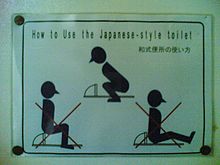1) If you go off base, always have yen (no dollars) with you. Most places will not take debit cards and it is hard to find debit machines that will accept your cards.
2) Speaking of money, coins are a way of life here. The smallest paper money is 1000 yen (similar to a $10 bill) - any time you use a 1000 yen bill, the change is all coins. It is easy to come home after a day sightseeing with 30 or 40 coins worth $10 to $15 or more.
2) Speaking of money, coins are a way of life here. The smallest paper money is 1000 yen (similar to a $10 bill) - any time you use a 1000 yen bill, the change is all coins. It is easy to come home after a day sightseeing with 30 or 40 coins worth $10 to $15 or more.
2) It is hard to find any fast food places - McDonald's is the most common. And there are few, if any, drive-thru places to eat. I don't think we have seen a drive-thru restaurant yet.
3) Parking is a frustrating experience - for several reasons. One, the parking spaces are small and meant for really small cars - not a van like we have. Two, in most places, everything is in Japanese Kanji - so you have no idea what they are trying to tell you. Third, everyone backs into the parking spaces - which I have actually started practicing on but it may be a while before I actually try in parking garage (because the parking spaces are so small). Fourth, fifth and sixth - everything is in Kanji. I posted this video earlier but it really encapsulates the stress and frustration of trying to park in a parking garage - in the video, we had already gone out the exit and then made a quick u-turn to go right back into the parking garage. We were trying to find a parking space big enough for the van. We were on the ground floor and I was trying to find the way to the higher levels. What we didn't know was that, as you entered the garage there were two lanes, the left lane bypassed the ground floor completely. The lane on the right took you ONLY to the ground floor - no way to get to the higher levels. We took the lane on the right and it took us a while to figure things out.
4) Driving on the tollways is very nice - but you will need to have Google Maps turned on (because most everything is in Kanji). And a lot of yen (mostly coins) - because the tollways can be expensive.
4) Driving on the tollways is very nice - but you will need to have Google Maps turned on (because most everything is in Kanji). And a lot of yen (mostly coins) - because the tollways can be expensive.
5) While driving on the tollways is relatively easy, driving in town can be stressful. In Yokosuka, there a couple of main roads that branch off into very narrow roads very quickly. If you miss a turn, you might have to travel a while to find a place to turn around. There is one benefit of missing a turn - we have been able to see a lot of Yokosuka this way.
6) Very few trashcans in public. About the only trashcans are found in front of convenience stores. You are expected to take the trash back to your house to throw away. Another reason to take a backpack when you go out.
7) Public bathrooms can be an adventure. One, they are hard to find - best bet is to go to a mall or find a McDonald's. Second, there are western bathrooms - which is what we are familiar with - and then there are two types of Japanese bathrooms - both are a definitely unique experience. The first is a washlet (like a bidet). Here is a photo:
7) Public bathrooms can be an adventure. One, they are hard to find - best bet is to go to a mall or find a McDonald's. Second, there are western bathrooms - which is what we are familiar with - and then there are two types of Japanese bathrooms - both are a definitely unique experience. The first is a washlet (like a bidet). Here is a photo:
Actually, in a lot of places, the Japanese have combined the western bathroom with a washlet (allowing you to chose how to use it).
The second Japanese bathroom is called a washiki. It is better to let the instructions on the photo explain this one:

8) And, of course, the language barrier can be difficult but many Japanese businesses are used to tourists - many have employees that either speak enough English or understand enough English that you can still get what you need (but sometimes there is a lot of pointing by both parties).
For a country girl the washiki looks easy enough!
ReplyDeletePretty funny, mom. The girls refuse to even try them - so they are always looking to make sure. Fortunately for them, most bathrooms have at least a combination of the different types. It is funny to see their reactions - negative when there isn't a western type and excitement when there is one.
Delete